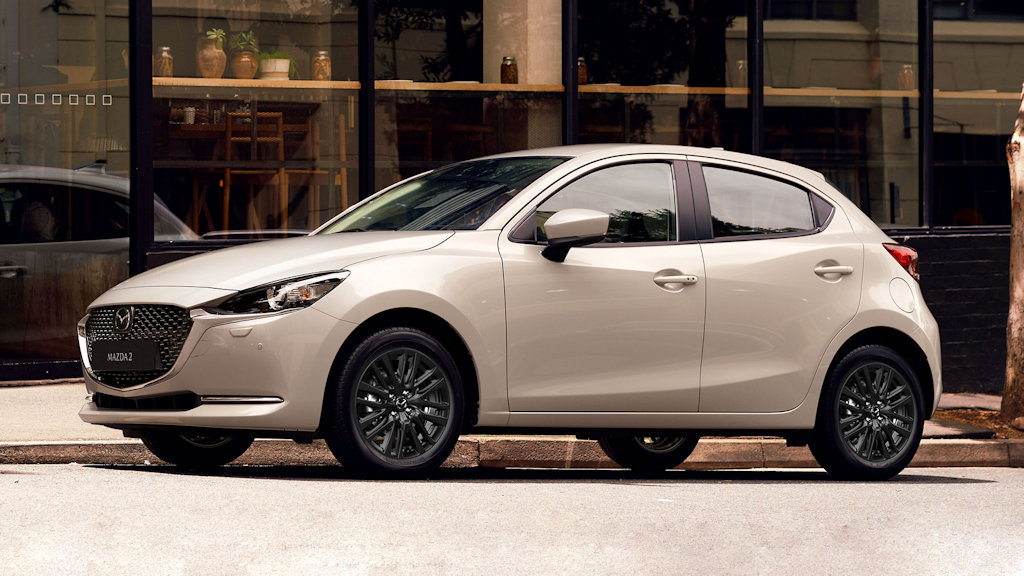In August 1996, Mazda launched the Demio, a sub-compact passenger vehicle that’s become a recognizable part of the carmaker’s line-up. Known in the Philippines and other global markets as the Mazda2, its sales have exceeded 3.5 million units across four generations.
In celebration of the Demio/Mazda2’s 20th anniversary, it’s time to look back at the history of this defining car for Mazda.
First-Generation Mazda Demio/Mazda 121 (DW)
Launched in August 1996, Mazda touted the Demio as a “new genre wagon.” It had a compact exterior footprint, but possessed high utility performance thanks to its generous interior room. Designers wanted to come up with a flexible little car that could be used for a wide range of situations from everyday use to weekend leisure use.
The first-generation Demio measured in at 3,800 mm longer and 1,670 mm wide which made it easier to maneuver around. Its overall height of 1,535 mm is taller than your average hatchback, but it still managed to fit in a multi-storey parking lot.
Second-Generation Mazda Demio/Mazda2 (DY)
The first model to officially carry the Mazda2 designation overseas, this sub-compact, launched in 2002, carried Mazda’s range of MZR engines. Not only did this model continue with its predecessor’s highly-efficient packaging, but they also managed to marry it with a dynamic exterior design and class-leading safety performance.
Serving as chief engineer for this Mazda2 was Kiyoshi Fujiwara—the man considered to be the father of Skyactiv Technology.
By the end of September 2006, cumulative production of the Mazda2 reached a million units at this point.
Third-Generation Mazda Demio/Mazda2 (DE/DH)
From a flexible, practical compact vehicle, the third-generation Mazda2 evolved into a personal compact—a reflection of changing market preferences. This made it a critical acclaim not just in Japan, but worldwide as well. This also became the first Mazda2 sold in the Philippines.
The third-generation Mazda2 is packed with dynamic styling; no surprise because it was penned by Ikuo Maeda, who later became the head of design at Mazda, and the man behind KODO: Soul of Motion.
Compared to the second-generation model, the third-gen Mazda2 went on diet, cutting approximately 100 kilograms. It also managed to introduce several cutting-edge engines including a 1.3-liter Miller cycle engine. It was also fitted with a 1.3-liter Skyactiv-G engine as well as an experimental range extender EV which had a 300-cc 38-horsepower rotary engine that charged the on-board 20-kWh battery pack. Propulsion was done via a 102-horsepower, 150 Nm of torque electric motor.
The third-generation Mazda2 won the World Car of the Year in 2008.
By 2011, cumulative global production of the Mazda2 reached two million units.
Fourth-Generation Mazda Demio/Mazda2 (DJ/DL)
When the fourth-generation Mazda2 launched in September 2014, it fully adopted the KODO design as well as the full suite of Skyactiv Technology.
Apart from the 1.3-liter Skyactiv-G engine used in the previous Mazda2, Mazda expanded the engine line-up to include two fuel-efficient Skyactiv engines—a 1.5-liter gasoline and a 1.5-liter diesel. Both of these engines also used a highly-efficient transmission (Skyactiv Transmission) and a lightweight, yet rigid Skyactiv chassis.
The Mazda2 was praised for its highly detailed exterior and interior design, condensing the Mazda design form into a small body. Moreover, it achieved an ideal driving position, dubbed Jinba-ittai, particularly in the placement of it pedals. This generation also benefited from a revamped man-machine interface—Mazda Connect which is still in use today.
It won the Japan Car of the Year 2014-2015. It also was the Philippine Car of the Year in 2015.
In 2022, Mazda Philippines unveiled the refreshed Mazda2 (see lead photo). This version brings the Evolved KODO Design to the sub-compact class while also adding the new signature color, Platinum Quartz Metallic, on top of Soul Red Crystal and Machine Gray.
It also brought class-leading safety with its i-Activsense features such as autonomous emergency braking (Smart City Brake Support), lane departure warning, drive attention alert, blind spot monitoring with rear cross traffic alert, rear parking sensors, and a reverse camera on top of the standard 6 SRS airbags as well as ABS with EBD, and electronic stability control.
Read our review of the 2022 Mazda2 1.5 Premium.









It has grew too much...in price LoL. But still hpy beerday!
ReplyDeleteThe vios is catching up interior wise.
ReplyDelete3rd gen is the best. Fuel efficient, durable, easy to repair because its low tech and not too complicated unlike the new model.
ReplyDeleteHappy 20tb birthday Mazda 2! Where are you now?
ReplyDeleteHappy birthday to Mazda's most neglected model lol
ReplyDeleteCan't wait for an all new model.
DeleteRebadged as Toyota Yaris in other markets
ReplyDeletehaberday! ang mahal mo pa rin, char...
ReplyDelete